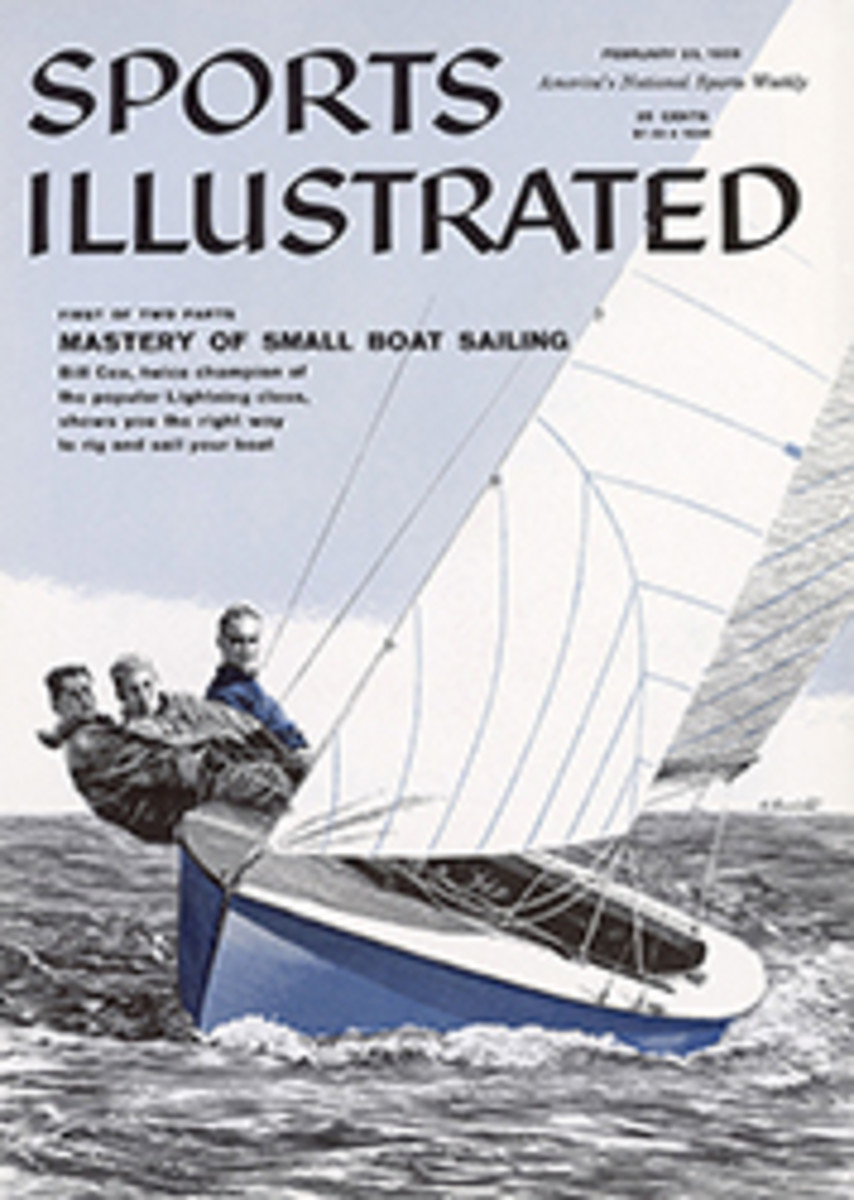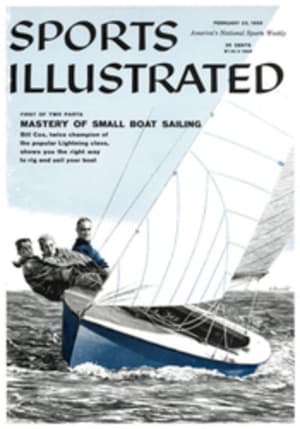
Fisherman's favorite
A favorite leisure-time occupation of Francis Higginson Cabot of New York City and his pretty wife Anne is fishing. In summer they journey with their two small children to the remote waters of the Éternité Fish and Game Club in the Saguenay region of Quebec to cast for the legendary ouananiche salmon. On autumn and spring weekends, which they spend in the country near Cold Spring, N.Y., the frequent quarry of all four Cabots (the children are ardent and skillful anglers) is smallmouth bass and trout. It seems appropriate, then, that the favorite food in the Cabot household should be a fish preparation.
When the youthful Cabots honeymooned in Paris "way back in 1949," as Frank says, they one night discovered the delights of a dish new to them at a little restaurant on the way up to Montmartre. Thereafter they followed quenelles de brochet—lor that was the dish—all through France. "At L'Oustau de Baumani√®re in Provence," he recalls, "they served the grandest version of all, fancied up with lobster tails and truffles. I decided then to learn to cook. But the quenelles I make now are a rather simple version derived from a recipe written some time ago by Samuel Chamberlain." Although Frank has now become quite an accomplished cook after office hours (he is in the investment business), quenelles is still the dish in the Cabot kitchen.
Quenelles are basically small fish mousses, or what the Scandinavians call fish puddings. Perhaps the whole idea got abroad in Europe at the time chopped-up food became fashionable at the court of France because Louis XIV had lost his teeth. Preparation of the dish, which requires forcing raw fish fillets through a fine sieve, is a long and grueling task by ordinary methods.
Frank Cabot prepares quenelles at his New York apartment with the help of an electric-powered kitchen mixer with sieve attachment, which he says turns a three-day labor into a two-day pleasure. In winter he uses the traditional pike, which he is able to buy in town, but says that bass, lake trout or pickerel serve equally well. Of course the quenelles prove a special satisfaction to the whole family when made with fish they have caught themselves. Here is Frank's up-to-the-minute method of preparing an ancient and classic dish:
QUENELLES DE BROCHET (serves eight)
The first three stages in making quenelles, and preparation of the fish broth for the sauce, are best accomplished a day ahead.
1 The panade: Place in a roomy, heavy saucepan¾ cup water,¾ cup milk, 4 tablespoons butter,½ teaspoon salt. Heat to the boiling point, stirring constantly with a wooden spoon. Remove from the stove and sift in, little by little, a scant 1¼ cups of already-sifted flour, stirring rapidly with a French whisk. Then add, one at a time, 4 whole eggs, beating well after each egg is added. Place pan back over moderate fire, whisking vigorously until mixture thickens into a paste which comes away from sides of the pan. Remove from fire. Spread the paste about½, inch thick on a platter. Cool, then chill for one hour.
2 Preparation of the fish: Meanwhile put skinless and boneless fillets of a 5-pound pike (or equivalent soft-fleshed, bland fish) through a mechanical chopper or meat grinder, using fine blade. Or else pound fillets in a mortar. Weigh the ground fish; use exactly the same weight of prepared panade. (A pike this size should yield a little more than a pound of ground fillets.)
3 The mixture: Mix the chopped raw fish and the cold panade together with beater of mechanical mixer. Now, using sieve attachment, run the compound through sieve of mixer. (Of course all this can be done laboriously by hand, but the machine does it in no time.) Remove sieve attachment, and with mechanical beater whip into the mixture, one by one, 4 whole eggs plus 2 egg whites. Gradually add½ pound sweet butter, previously creamed by hand. Work the mixture vigorously with the mechanical beater, seasoning with 2 teaspoons salt,½ teaspoon white pepper and a little nutmeg, freshly grated if possible. Place in a dish and allow to stand in refrigerator overnight, or for at least 6 hours.
4 The poaching: After the preparation has thus "rested," place it on a lightly floured board or slab of marble. Now take up small pieces, one by one, and roll these with your hand into sausage shapes—as large or as little as desired, but of about equal size (see picture opposite). When all the "dough" is made up into these rolls, poach them in barely simmering salted water in a shallow pan on the top of the stove. They will be done in approximately 20 minutes. When cooked, remove with a slotted spoon; drain carefully on a cloth. Arrange in a large, heated baking dish or deep platter. Cover with sauce you have made, and serve.
5 A sauce for quenelles: Place the head and bones of the pike or other fish used for quenelles in 2 cups water with pinches of salt, pepper and thyme, a slice of onion, a bay leaf and a sprig of parsley. Simmer covered for 35 to 40 minutes. You should have about a cup and a half of strong fish broth after straining. Add to this½ cup heated, bottled clam broth. Now melt, in a double boiler, 4 tablespoons of butter, and blend in 4 tablespoons of flour. Add dashes of salt and pepper and, stirring vigorously, the 2 cups of hot broth. Cook, stirring with whisk till sauce is thick and smooth. Then add 2 cups heated heavy cream and¼ cup Calvados or American apple brandy (applejack).
Do not allow to boil after this point. Simmer for several minutes; then stir in, bit by bit, 2 tablespoons of cold butter that has been previously pounded with 2 small cooked shrimps (or a bit of canned or other cooked lobster) and then chilled again. Now the sauce is ready to serve.
PHOTO
LOUISE DAHL-WOLFE
EARLY LESSON in fine cooking is absorbed by Colin Cabot, 8, and his sister Currie, 4, as they watch their father preparing pike quenelles.

